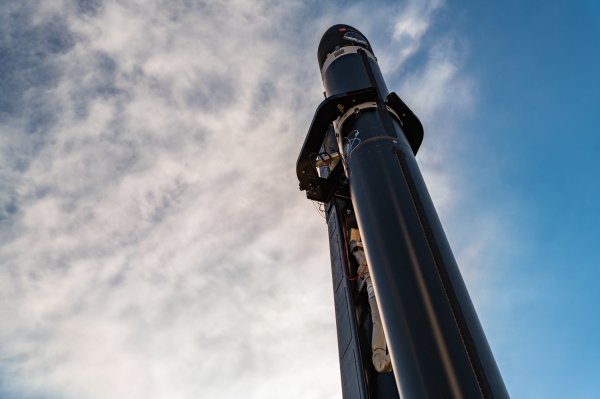We’re going to have to wait a little longer for Rocket Lab’s American debut. The company, which is headquartered in Los Angeles, was due to launch a trio of satellites for radio-frequency analytics customer HawkEye 360 to orbit from the company’s new site at Virginia Space’s Mid-Atlantic Regional Spaceport. It would’ve marked the first time a Rocket Lab vehicle has taken off from U.S. soil. But the company said late yesterday that strong upper-levels winds made today — the final day in the launch window — a no-go, pushing the launch to January.
It’s certainly a bummer. The mission was due to have a handful of firsts: Not only marking the first time Electron takes off from U.S. soil, but also the first time a rocket flies with novel flight safety software that Rocket Lab and NASA say is a gamechanger for American launch plans. That software, an autonomous flight termination system, will reduce range costs and prime Rocket Lab to serve the launch needs of the U.S. defense agencies.
“This flight just doesn’t symbolize another launch pad for Rocket Lab,” CEO Peter Beck told reporters in a media briefing last Wednesday. “It’s a standing up of a new capability for the nation.”
That capability is called the NASA Autonomous Flight Termination Unit (NAFTU), a key component of the Pegasus software, which was jointly developed by Rocket Lab and the space agency. Autonomous flight termination capabilities will be required on all Department of Defense launches by 2025.
It took a number of years — and more than a few delays — to get NAFTU certified, David Pierce, director of NASA’s Wallops Flight Facility, told reporters. He said that NASA discovered “a number of errors in the software code” in 2020, but even after they were fixed, the unit had to undergo a lengthy independent testing and certification process. These delays prevented Rocket Lab from conducting launches from the new launch complex, LC-2, until now.
“I can’t stress enough how significant this moment is in time for launch ranges and the launch industry,” Pierce said. He estimated the unit could reduce launch range cost by as much as 30% and help providers boost launch cadence.
Once the rocket returns to the pad in January, it will carry three HawkEye 360 satellites to orbit, where they will eventually fly in formation and collect radio-frequency data; HawkEye downlinks the data and analyzes it for customers. This is the first of three launches the company has purchased from Rocket Lab, and it will bring the total number of HawkEye satellites in orbit to 18.
Rocket Lab will not attempt a booster recovery for this mission, Beck said. The company has developed a technique to catch a booster returning to Earth using parachutes and a helicopter, which snatches the drifting parachute in mid-air. Beck said there was no fundamental reason why the company wouldn’t attempt a booster recovery at the Virginia launch site, but he added, “We need to get it right, and using our own range in New Zealand to do that is by far the most efficient way to do that.”
Rocket Lab isn’t just using Virginia as a launch site. The company is also pouring significant capital into the development of the heavier-lift Neutron rocket, including a launch site and manufacturing and refurbishing facility. The company’s investment in Wallops is a departure from other launch companies, like SpaceX, Relativity and Blue Origin, which have all set up shop at NASA’s Kennedy Space Center and the Cape Canaveral Space Force Base in Florida.
Beck said it was “the quietness of the range and the ability of the range to increase capacity” that drew Rocket Lab to Wallops over the sites in Florida.
“KSC is an amazing range but I think everybody has to agree, it’s pretty busy,” he said. “The [Wallops] range is not nearly as busy and there’s a lot of room to grow.”
Wallops is working with the FAA to accommodate an increased launch cadence from the mid-Atlantic region, Pierce said. For Rocket Lab’s part, Beck added that the company has the flexibility to switch between the two launch sites — LC-2 and LC-1 in Mahia Island, New Zealand, which is a fully private launch facility — to meet customer needs.
